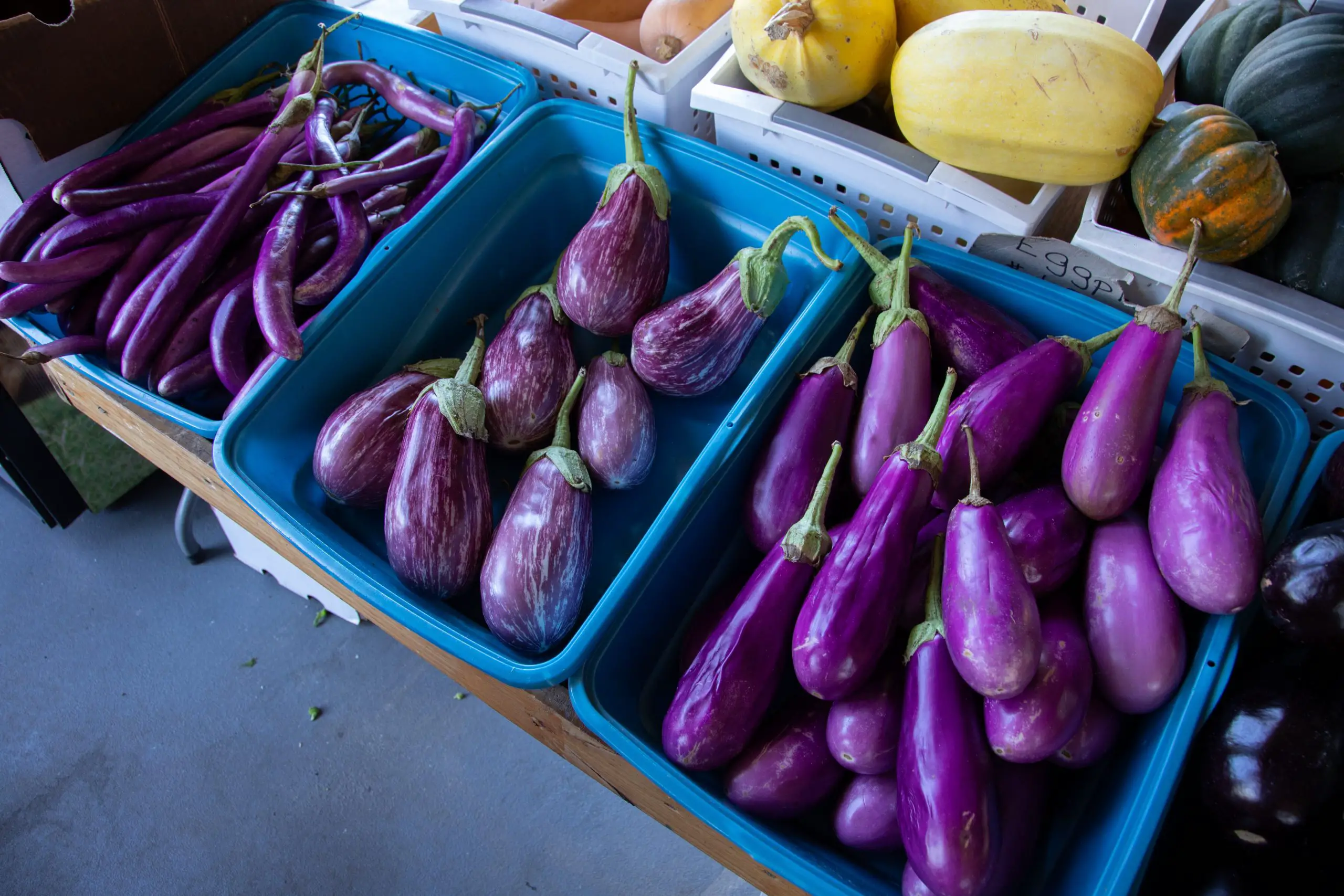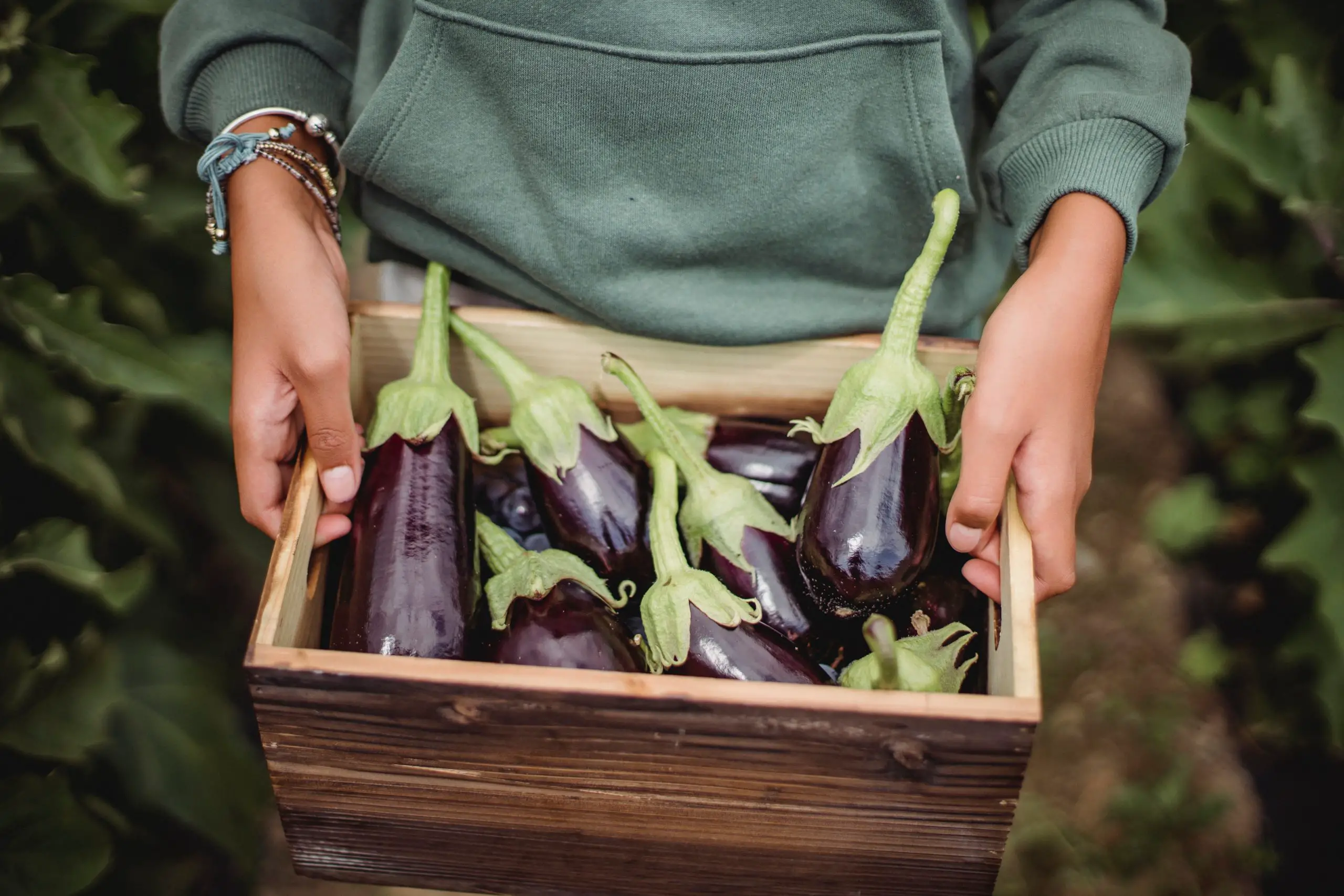Whether a beginner or an experienced cook, you probably have asked yourself, “How can you freeze eggplant?” It’s an important question to ask because eggplant is a very delicious vegetable, but the last thing you want to do is ruin it by freezing it. Fortunately, there are some simple ways to freeze eggplant. So let’s Start! This article will guide you on how to freeze eggplant, its shelf life, and other important information.

How can you Freeze Eggplant?
It is easy to freeze eggplants later in cooked meals like lasagna or eggplant parmesan. Whether you want to freeze eggplant for cooking or storage, there are many options. You can freeze eggplant is sliced, cubed, or pureed form. You can also freeze eggplant by baking it first.
The method you choose depends on the recipe. If you want to freeze eggplant, choosing a ripe variety that does not have soft spots is best. It should also be dark in color. This will allow it to freeze more easily. If you’re looking for a quick meal or a long-term storage solution, you can freeze eggplant.
It is a great way to provide a nutritional boost in the winter. But before you freeze eggplant, you should consider what you’ll use it for and how long it will last in the freezer. How to freeze eggplant is described below with step-by-step instructions:
Pick Mature Eggplants:
Select ripe eggplants that are free of bruising. The seeds should be white at this point rather than brown and ripe. Peel the eggplant’s skin after washing and drying it.
Set a Saucepan of Water to Boil:
Pour half a cup of lemon juice into each gallon of water when adding it to the water. The eggplant won’t turn brown because of the lemon in the water.
Cut the Eggplant into Slices
Just enough eggplants should be sliced to fill the pot because exposed eggplants brown in the air. Another method involves flash freezing. You can either freeze the eggplant whole or cut it into uniform pieces. You will have to let it freeze for a few hours before defrosting. This process helps to break up the solidified pieces, which can make it easier to defrost.
Blanch the Eggplant:
The enzymes that cause eggplants to lose their texture and flavor are gradually destroyed by blanching. Eggplant benefits from being partially cooked before freezing because it also has a high water content.
Whether cooking up a delicious eggplant stew or baking a delectable dish, blanching eggplant is important to ensure the vegetable’s taste and texture remain intact. It’s also a great way to ensure your food stays fresh for longer. You can freeze eggplant in a variety of ways.
One of the most common methods involves soaking the eggplant in water. This method is quick and easy, but it can also leave your eggplant raw and unsuitable for human consumption. Additionally, it would be beneficial if you did not freeze eggplant because the fruit can lose its shape and turn mushy.
Make an Ice bath:
Slices of eggplant should be placed in a sizable dish of ice water using a slotted spoon. The cold water will stop the eggplants’ frying.
Pat the Sliced Eggplant Dry:
Before freezing eggplant, you should clean and dry the vegetable. With a paper towel, dry off the eggplant pieces. It would be beneficial if you made sure to eliminate the skin and any bitterness. Lemon juice should be brushed on the eggplant to give it flavor. The lemon juice will also help prevent the eggplant from browning.
Transfer the Eggplant to a Baking Sheet:
After the eggplant slices have dried, set them on a baking sheet lined with parchment paper. The eggplant won’t stick on the cookie sheet, thanks to the paper. The eggplant should be frozen completely after a few hours in the freezer.
The eggplant slices won’t stick together because of the flash freezing after cleaning and drying; you should put the eggplant on a baking sheet lined with parchment paper. The parchment will prevent it from sticking to the pan. Alternatively, you can wrap the eggplant in plastic or foil.
Store the Eggplant:
Fill an airtight container or freezer bag with the frozen eggplant slices. A food-grade vacuum sealer is more effective at storing eggplant than a general vacuum sealer. You will need a special storage bag when using a food-grade vacuum sealer. Slices of frozen eggplant stay for up to a year in the freezer.
Using Vacuum-sealing for Freezing Eggplant; Using a vacuum sealer to store eggplant is a great way to preserve its freshness. The vacuum sealer will protect the eggplant from drying out, freezer burn, and loss of flavor. It will also save you money by allowing you to buy in bulk. There are several steps involved in storing eggplant with a vacuum sealer.
First, you must prepare the eggplant. It should be cut into rounds or slices. It is important to wash and dry it properly. If you are storing eggplant for a long time, you may want to use a food-grade vacuum sealer.
Using Plastic Bag or Freezer Bag for Freezing Eggplant; You can purchase a freezer or a standard resealable plastic bag. Both bags will help prevent freezer burn. You can also freeze eggplants unopened in a freezer bag. When thawed, you can use it to make a variety of recipes.
Is Fried Eggplant Freezable?
Fried eggplant works well in a variety of dishes. In addition, freezing the fried eggplant on its own is the finest way to prepare the traditional dish if you’ve ever wondered if you could freeze eggplant Parmesan. All you need to do is prepare your fried eggplant slices, let them cool to room temperature, then put them in a single layer on a sheet pan and freeze, uncovered, until solid. Put the frozen slices in a freezer bag for future sandwiches, entrées, or casseroles with eggplant parm.
Can you Freeze Fried Eggplant?
Fried eggplant works well in a variety of dishes. In addition, freezing the fried eggplant on its own is the finest way to prepare the traditional dish if you’ve ever wondered if you could freeze eggplant Parmesan.
All you need to do is prepare your fried eggplant slices, let them cool to room temperature, then put them in a single layer on a sheet pan and freeze, uncovered, until solid. Put the frozen slices in a freezer bag for future sandwiches, entrées, or casseroles with eggplant parm.
How can you Freeze Cooked Eggplant?
For a quick future meal, you may also freeze cooked eggplant. To roast eggplant before freezing, cut it in half into cubes or slices.
Halves of an eggplant: Olive oil-roasted eggplant halves should be cooked for 35 to 40 minutes at 400 degrees Fahrenheit or until the flesh is tender. The flesh can then be scooped into a freezer-safe container and kept there. You can use it to make purees, spreads, or soups after being frozen for up to a year.
Cubed eggplant: Roast cubed eggplant in a 375°F oven for 45 minutes or until the eggplant pieces are browned. Then, for a delectable side dish, you may thaw them briefly in the microwave before heating them directly from the freezer. After that, you can keep them for up to a year in an airtight container in the freezer.
Sliced eggplant: One-inch rounds of eggplant can be roasted in the oven for 30 minutes at 400 degrees Fahrenheit. Before putting the slices in a freezer bag or a sealed container, they should be frozen on a baking sheet. Slices of eggplant can be layered in lasagna or added to sandwiches.
How Long do Eggplants Last?
It would help if you chose the greatest eggplant, but you also need to know how long it will remain perfectly ripe. An eggplant will remain edible for three to five days when stored at room temperature, ideally away from direct sunlight.
Fresh produce is preferred, as it is with practically all fruits and vegetables. Your produce will cook up and taste better the fresher it is when used or consumed. Before eating an eggplant, you don’t have to peel it; however, larger eggplants could have rougher skin.
How should I Use Frozen Eggplant?
You may use frozen eggplant pieces in any recipe that asks for cooked eggplant, including soup, lasagna, and ratatouille. Fried eggplant can be made by coating frozen slices with bread crumbs and fry them immediately. To produce an eggplant spread or a side dish, you can roast the frozen eggplant.
How do you Know When Eggplant is Bad?
The skin appears faded and has lost its luster. The fleshy interior, including the black seeds, is slimy or brown. There are soft or rotting areas on it or within it. It stinks or smells awful. If your raw eggplants exhibit any warning signals, throw them away. The following is the best way to detect whether an eggplant is bad:
- It is plush and soft.
- The skin has a dull appearance and seems shriveled.
- The interior flesh, including the black seeds, is slimy or colored brown.
- On it or within it, there are soft or rotting areas.
- It smells rotten or offensive.
Conclusion
It is both possible and beneficial to freeze eggplant. It requires some preparation to freeze it raw, but if you love aubergines or come from a parm-loving family, it’s well worth the effort. It’s always a good idea to have eggplant on hand.
It is wholesome and nourishing, a fantastic meaty vegetable for filling vegetarian and vegan dishes, and it is incredibly flexible because it can withstand strong seasonings. The simplest way to freeze eggplant is to lay it flat in a freezer bag. Make sure the bag is airtight and has a half-inch headspace. This will help prevent the eggplant from deteriorating as it freezes.
